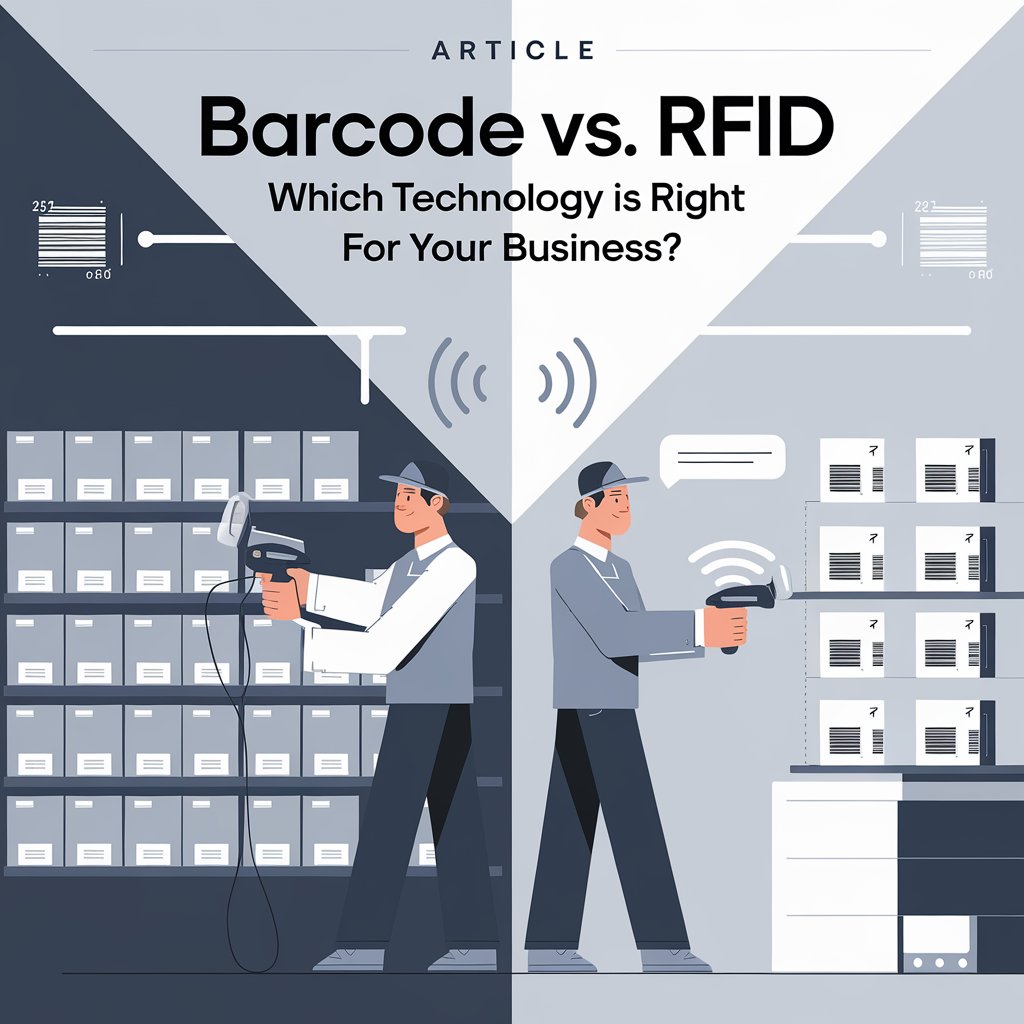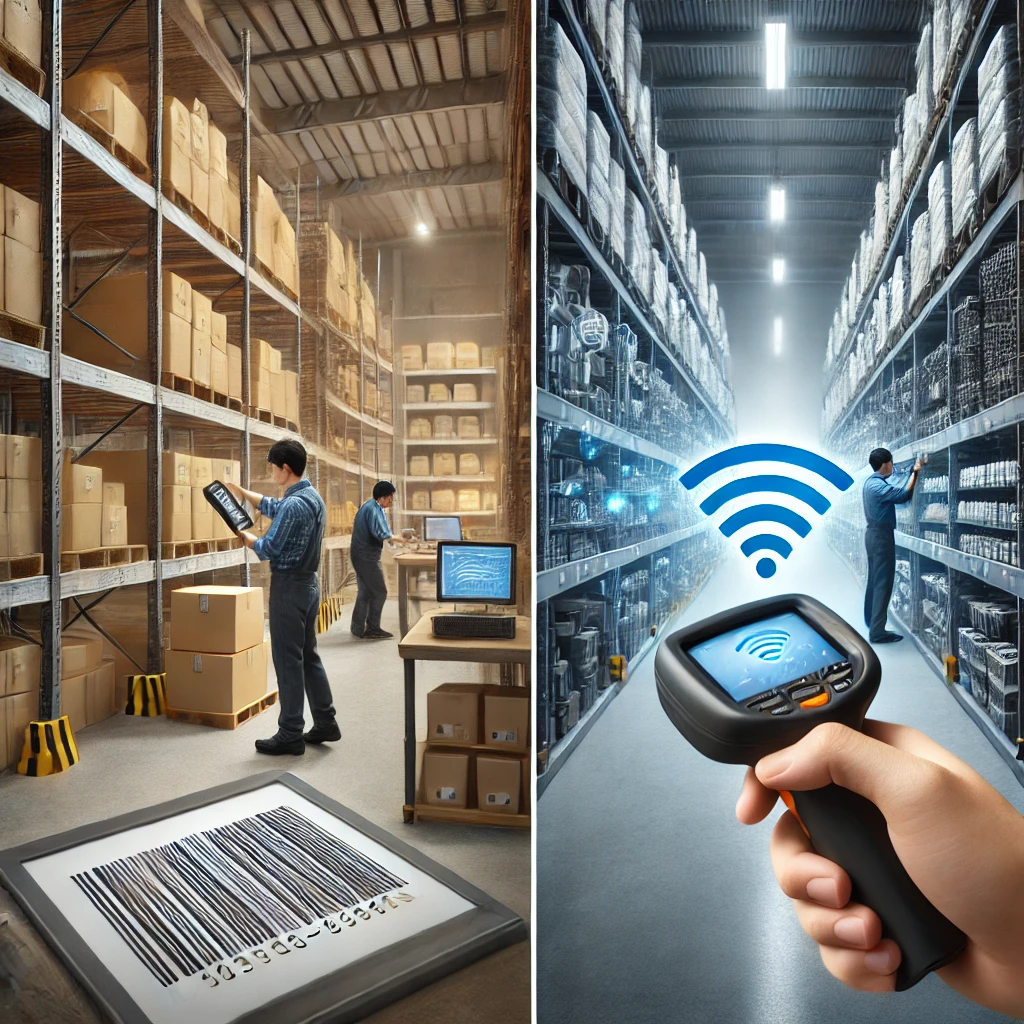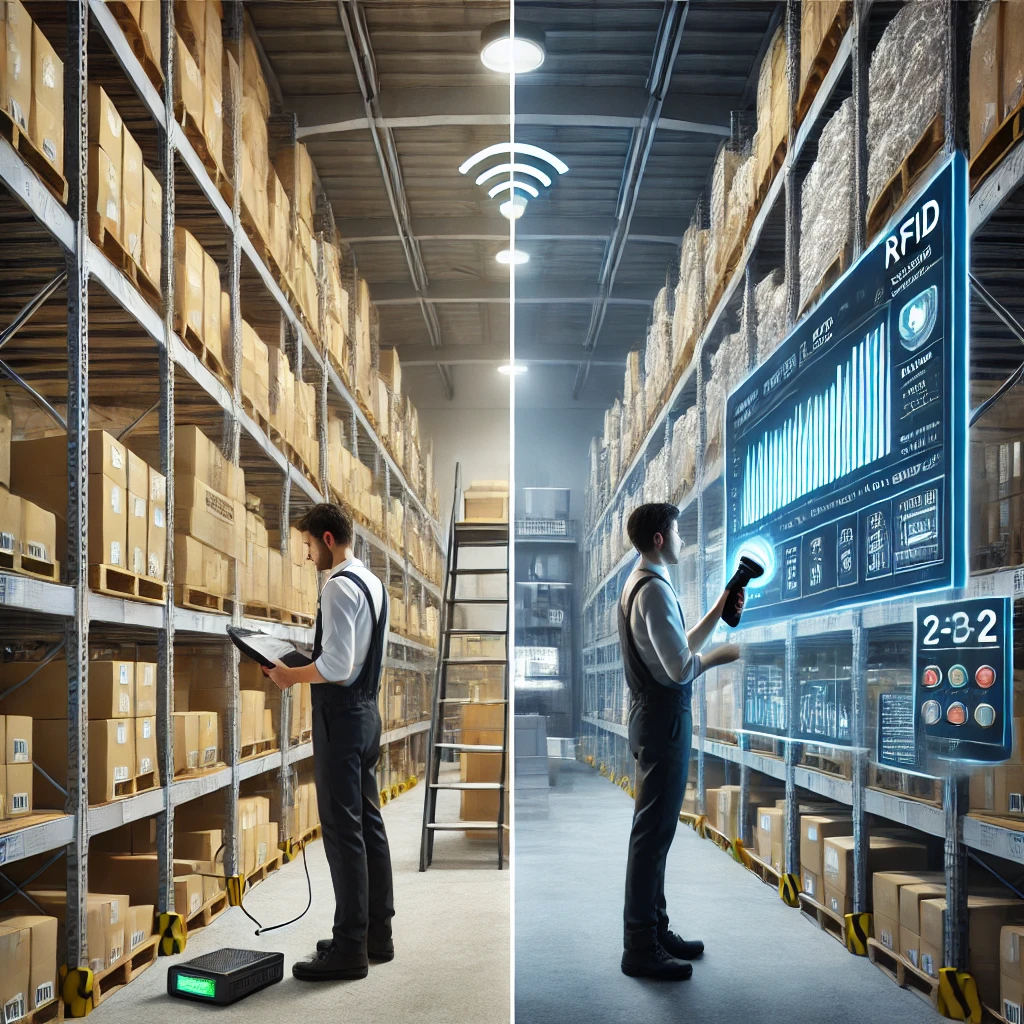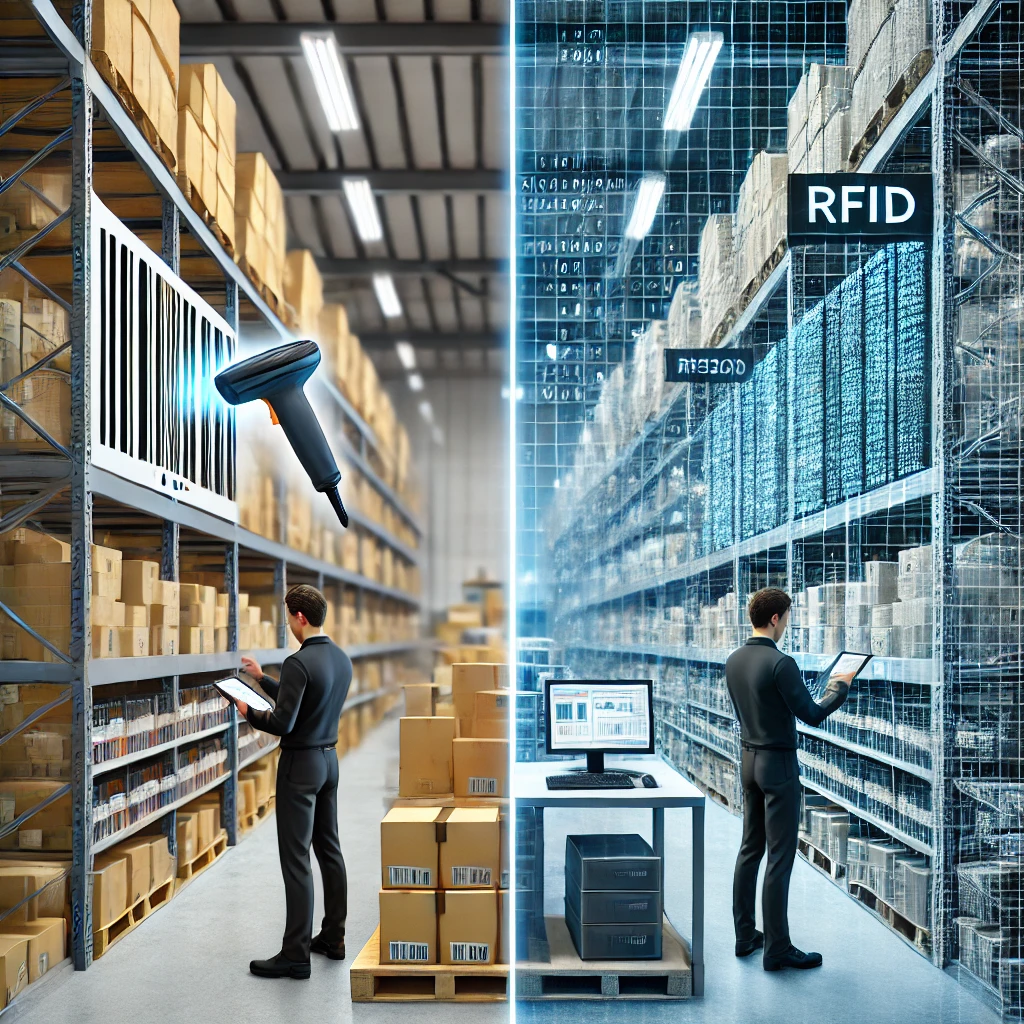Barcode vs RFID: Choosing the Right Inventory Tracking Technology

Understanding Barcode Technology
Barcode vs RFID technology has been a staple in inventory management for decades. It involves using a series of parallel lines of varying widths to represent data, which can be read by optical scanners.
Types of Barcodes:
- 1D Barcodes: Traditional linear barcodes (e.g., UPC, Code 39)
- 2D Barcodes: More complex codes that can store more data (e.g., QR codes, Data Matrix)
Pros of Barcode Technology:
- Low cost of implementation
- Widely adopted and understood
- Reliable and accurate when used correctly
- Easy to generate and print
Cons of Barcode Technology:
- Requires line-of-sight for scanning
- Can only be scanned one at a time
- Limited data storage capacity (especially 1D barcodes)
- Susceptible to physical damage

Understanding RFID Technology
RFID uses radio waves to identify and track objects. It consists of a tag containing a chip and an antenna, and a reader that communicates with the tag.
Types of RFID:
- Passive RFID: Tags without their own power source, activated by the reader’s signal
- Active RFID: Tags with their own power source, capable of broadcasting their signal
Pros of RFID Technology:
- No line-of-sight required for scanning
- Can read multiple tags simultaneously
- Higher data storage capacity
- Tags can be read and written to multiple times
- More durable than barcodes
Cons of RFID Technology:
- Higher implementation cost
- Potential interference from metals and liquids
- Privacy concerns due to long-range readability
- More complex technology, requiring specialized knowledge

Comparison: Barcode vs RFID
Let’s compare these technologies across various factors:
1. Cost barcode vs RFID
- Barcode: Low cost for tags and readers
- RFID: Higher initial investment for tags and infrastructure
2. Accuracy
- Barcode: Very accurate when scanned correctly, but prone to human error
- RFID: Highly accurate with minimal human intervention
3. Speed barcode vs RFID
- Barcode: Slower, requires individual scanning
- RFID: Faster, can read multiple tags simultaneously
4. Range barcode vs RFID
- Barcode: Requires close proximity and line-of-sight
- RFID: Can read from a distance, no line-of-sight needed
5. Data Capacity
- Barcode: Limited, especially for 1D barcodes
- RFID: Higher data storage capacity
6. Durability
- Barcode: Can be damaged easily, affecting readability
- RFID: More resistant to environmental factors
7. Flexibility
- Barcode: Static information once printed
- RFID: Can be rewritten and updated
8. Industry Adoption
- Barcode: Widely adopted across many industries
RFID: Growing adoption, especially in retail, manufacturing, and logistics
Choosing the Right Technology for Your Business
To determine whether barcode or RFID is right for your business, consider the following factors:
- Budget: If cost is a primary concern, barcodes may be more suitable.
- Volume of Items: For high-volume operations, RFID’s ability to scan multiple items quickly can be advantageous.
- Type of Items: RFID may be preferable for tracking high-value items or those requiring frequent updates.
- Environment: Consider factors like the presence of metals or liquids, which can interfere with RFID.
- Data Needs: If you need to store and update large amounts of data, RFID might be more appropriate.
- Integration with Existing Systems: Consider compatibility with your current inventory management system.
- Future Scalability: Think about your long-term needs and which technology offers better scalability.
Hybrid Approaches barcode vs RFID
In some cases, a hybrid approach using both barcode and RFID technologies can provide the best solution. This allows businesses to leverage the strengths of both systems:
- Use barcodes for item-level identification
- Employ RFID for pallet or case-level tracking
This approach can offer a balance between cost-effectiveness and advanced tracking capabilities.

Implementation Considerations barcode vs RFID
Whichever technology you choose, consider these implementation tips:
- Conduct a Pilot Test: Start with a small-scale implementation to identify and address issues.
- Train Your Staff: Ensure your team understands how to use the new technology effectively.
- Update Your Processes: Modify your inventory management processes to fully leverage the new technology.
- Plan for Maintenance: Regular maintenance of readers and tags/labels is crucial for optimal performance.
- Consider Data Security: Implement appropriate security measures, especially for RFID systems.
Future Trends
As technology evolves, we’re seeing new developments in both barcode and RFID technologies:
- Smart Barcodes: Incorporating NFC technology for enhanced functionality
- Chipless RFID: Lowering the cost of RFID implementation
- Integration with IoT: Connecting inventory tracking with broader Internet of Things ecosystems
Conclusion
Both barcode and RFID technologies offer valuable solutions for inventory tracking, each with its own set of advantages and limitations. The choice between the two depends on your specific business needs, budget, and operational environment.
For many businesses, barcodes continue to offer a cost-effective and reliable solution for inventory tracking. However, as RFID technology becomes more affordable and widespread, it’s increasingly becoming a viable option, especially for businesses dealing with high volumes or requiring more sophisticated tracking capabilities.
Remember, the goal is to choose a technology that not only meets your current needs but also aligns with your future growth plans and industry trends.
How Linbis Can Help
Navigating the choice between barcode and RFID technologies can be challenging, especially when considering the unique needs of your business. This is where Linbis comes in. As experts in logistics software development, Linbis offers both out-of-the-box solutions and custom development services tailored to your specific inventory tracking needs.
Linbis can assist you in several ways:
- Technology Assessment: Our team can evaluate your business processes and help you determine whether barcode, RFID, or a hybrid solution is best suited for your needs.
- Custom Software Development: Whether you choose barcode or RFID, Linbis can develop software that integrates seamlessly with your existing systems and optimizes your inventory tracking processes.
- System Integration: We ensure smooth integration of your chosen technology with your inventory management, ERP, or other business systems.
- Hardware Recommendations: Linbis can advise on the most suitable hardware options, whether you’re implementing a barcode or RFID system.
- Scalable Solutions: Our solutions are designed to grow with your business, allowing you to start with a basic system and expand as needed.
- Training and Support: We provide comprehensive training for your staff and ongoing support to ensure you get the most out of your inventory tracking system.
By partnering with Linbis, you gain access to our wealth of experience in implementing both barcode and RFID systems across various industries. We understand that each business is unique, and we’re committed to providing solutions that not only meet your current needs but also support your future growth.
Remember, while Linbis provides the technological expertise, the success of your inventory tracking system ultimately depends on how well it’s integrated into your business processes. Let Linbis be your guide in choosing and implementing the right technology to streamline your operations and drive your business forward.
